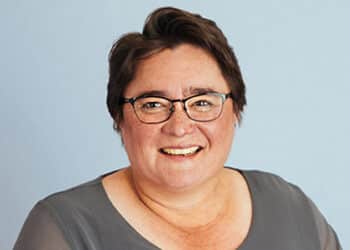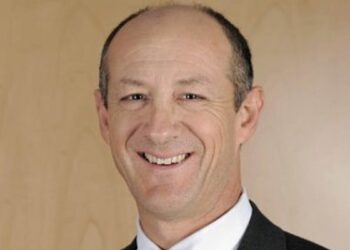In a fact sheet released last week, the government outlined that the total super balance will be used to calculate a member’s earnings, meaning unrealised gains and losses will be included.
In a recent article, Heffron managing director Meg Heffron explained that under Treasury’s proposed calculation, earnings for the extra tax includes everything that causes an account balance to go up.
“This includes increases in the value of the assets that he fund holds even when it hasn’t sold anything,” she noted.
Ms Heffron gave an example of Brad who had $5.5m in super at 30 June 2026.
The proportion of Brad’s earnings that will be subject to the extra tax of 15 per cent would be 45.45 per cent.
Under the earnings calculation, Ms Heffron explained that Brad’s “earnings” won’t just include the income his super fund would normally pay tax on – things like interest, rent, dividends or capital gains on assets it’s actually sold, it also includes growth in assets that the fund hasn’t sold.
“If a member owned 500 shares worth $20 each (i.e. $10,000 worth of shares) in your own name and during the year you earned dividends of $500. You would absolutely expect to pay tax on that – whether you received the dividend in cash or reinvested it, you’d pay tax,” she stated.
“But what if the shares also grew in value and by the end of the year those same 500 shares were worth $22 each? Now the total value is $11,000. Normally, you wouldn’t pay tax on that extra $1,000 until you sold the shares.”
While in this example, the member Brad only had to find $20,500 in cash to pay the tax, there could easily be scenarios where the amounts involved are much larger and there is no cash available.
“What if the earnings were actually $1 million because the only asset in Brad’s super fund was a property that had skyrocketed in value during the year,” she said.
The tax in this case would be: 45.45% x $1m x 15% = $68,000 approximately.
“What if Brad’s super fund was really only generating enough cash to pay his pension? The property is rented out and earns around $150,000 per annum but with expenses etc, there’s not a huge buffer over the pension payments,” she noted.
“Normally that’s not a problem – Brad’s fund only needs enough cash to pay his pension and (worst case) if the property is untenanted for a while or needs major repairs so cash really dries up, he’s allowed to switch off (commute) his pension so that the fund doesn’t need any cash flow for a while.
However, this special extra tax will apply regardless, and if the fund doesn’t have the cash to pay it, Brad will have to.
“So in fact this extra tax could mean Brad’s retirement income is used to pay tax on growth in the value of his fund’s property.”
“Normally tax on capital gains is perfectly reasonable because it only applies when the property is sold. At that time, the fund would – of course – be expected to have the cash to pay it. The inequity in this tax is that it must be paid in advance while the property is growing in value and hasn’t been sold.”
Ms Heffron warned the proposed calculation will also potentially create issues where the fund has a drop in value.
“Asset values at a specific point in time (30 June 2026 in this case) can sometimes be slightly arbitrary. For many investments, it’s only really possible to know what they’re worth when they are actually sold.”
“So what if – in the following year – Brad’s fund sells some of his assets and ends up getting much lower prices than he anticipated. At 30 June 2027 his fund is only worth $5.2m after taking $100k in pension payments?”
In 2026/27, Ms Heffron said his earnings for the purposes of the special extra tax will be:
$5.2m – $5.5m + $100k = -$200k
“In other words, his earnings are actually a loss. Unfortunately Brad won’t get a tax refund – he will just be allowed to carry this loss forward and use it to reduce earnings in a future year,” she stated.
“What if Brad withdraws a lot of his super during 2027/28 and by 30 June 2028 he has less than $3 million? At that point, the measure no longer applies to him.
So in essence, Brad has paid over $20,000 in tax for a capital gain that his fund never actually received and he can’t get his money back.”



Great worked example Meg of how taxing unrealised gains is not only unfair it’s unjust. Is this just going to be applied to the SMSF sector or do they have plans for this to apply across the board? If this is just a superannuation policy then it’s a direct attack on the SMSF sector and the aspiration of millions not to rely on government pensions.
This will also begin to distort investment choices as those under preservation age will be doing their best to remain under the $3m and so will shy away from pre-revenue companies where exponential growth could put them at risk of being personally liable for this tax until they reach their preservation age. Fund’s considering LRBA’s will also need to be careful given a proportion of the outstanding loan could trip the member over the $3m TSB threshold if a nil cashing restriction is soon to be met, or the loan is, or will be a related party LRBA.
The fact that those who have saved and invested in such a way cannot withdraw the excess amount is mind boggling. If $3m is enough then the government should allow those under preservation age to choose if they would prefer to take the money out of the superannuation system, or if they want to keep the money there and pay the tax year on year.
The TBC and TSB contribution rules have already addressed the inequality in the system, and the large funds will soon be no more as members pass and the money is withdrawn from the system in compliance with the TBC requirements.
If the limit is reduced to $1.9m these problems will only be amplified and super fund members will think twice before saving for their retirement that could cost them additional personal tax until they reach preservation age.
I do not see that this interpretation can be the intention. Without amendment to current CGT legislation the base tax of 15% would not be payable on unrealised gains, but the surcharge will?? What a ridiculous notion!! If true this will add another complication to the existing mess the re Total Super Balance and the Transfer Balance Cap, in particular the TBC Indexation which is going to create a different “Cap” for anyone who has started a pension.